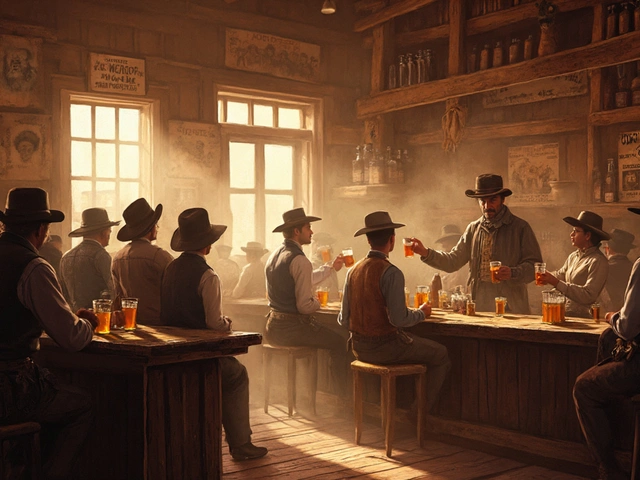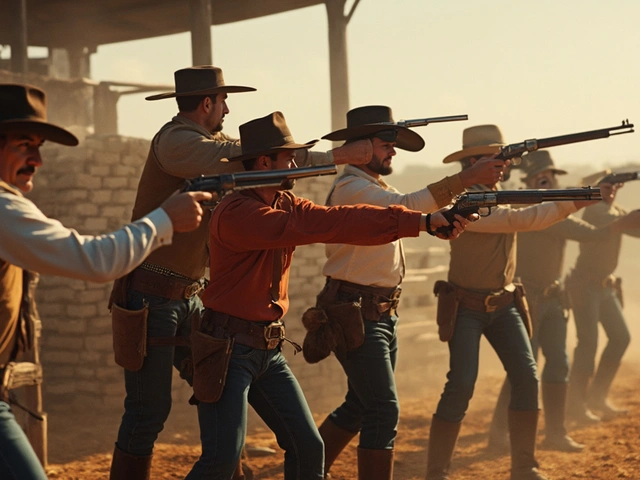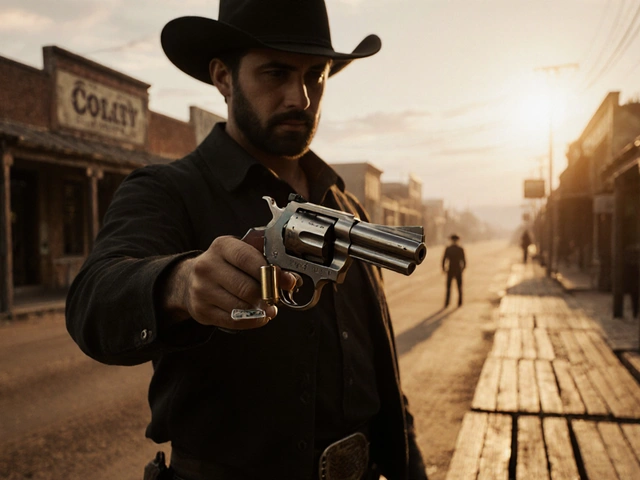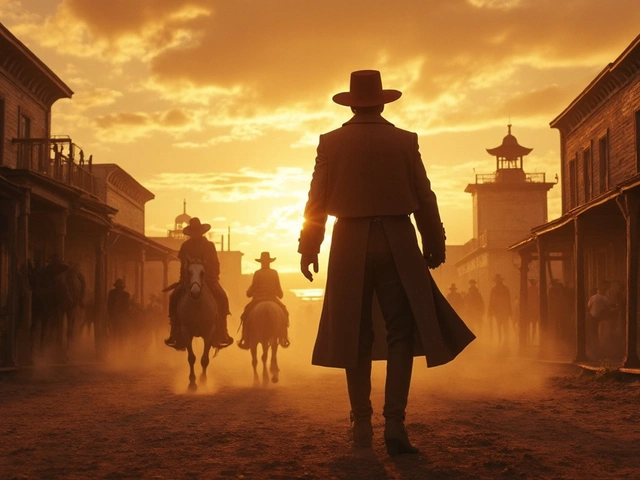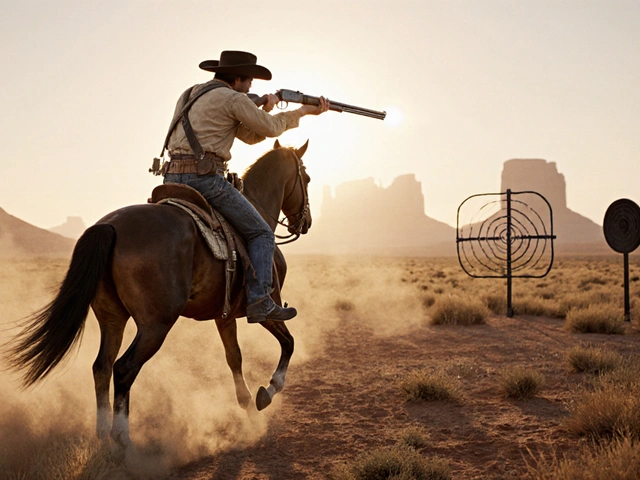Wild West leisure is the set of recreational activities that frontier residents enjoyed during the late 1800s. It includes everything from gambling in town saloons to travelling shows that rolled through dusty settlements. In a world of long cattle drives and harsh weather, having a way to unwind was essential. Wild West leisure shaped community bonds and gave cowboys a chance to show off skills beyond the range.
Saloon Socials
Saloon is a drinking establishment that served as the social hub of most frontier towns. Located typically on Main Street, the saloon offered a bar, billiard tables, and a stage for live piano. Cowboys would ride in after a long day's work, order whiskey, and gather around a worn wooden table for conversation. The environment fostered both camaraderie and occasional brawls, a dynamic that defined the mythic image of the "wild" West.
Card Games and Gambling
Gambling is a leisure activity involving wagering money or goods on chance or skill. Popular games included poker, faro, and dice, often played at the saloon bar. A standard pack of 52 cards circulated constantly; betting stakes ranged from a few silver dollars to whole gold nuggets on high‑stakes games. Historical accounts from the Dodge City archives (1885) note that a single poker hand could move $200-a fortune at the time.
Rodeos and Horse Racing
Rodeo is a competitive showcase of cowboy skills such as bronc riding, roping, and bull riding. Early rodeos emerged as informal contests during cattle roundups. Towns would set up a rough arena on the prairie, and spectators clapped as riders demonstrated daring feats. Horse racing, another crowd‑pleaser, often took place on a makeshift track around the town square, with wagers placed on favorite steeds. Records from the 1892 Cheyenne Fair show a prize purse of $500 for the winning horse-substantial for the era.
Shooting Contests
Shooting contest is a competitive event testing marksmanship with rifles or revolvers. Common formats included target shooting, quick‑draw duels, and "shoot‑the‑bottle" challenges. These contests were often organized by the local militia or a saloon owner looking to draw a crowd. Winners earned not just cash prizes but bragging rights, and newspapers like the "Tombstone Daily" frequently listed champion shooters by name.
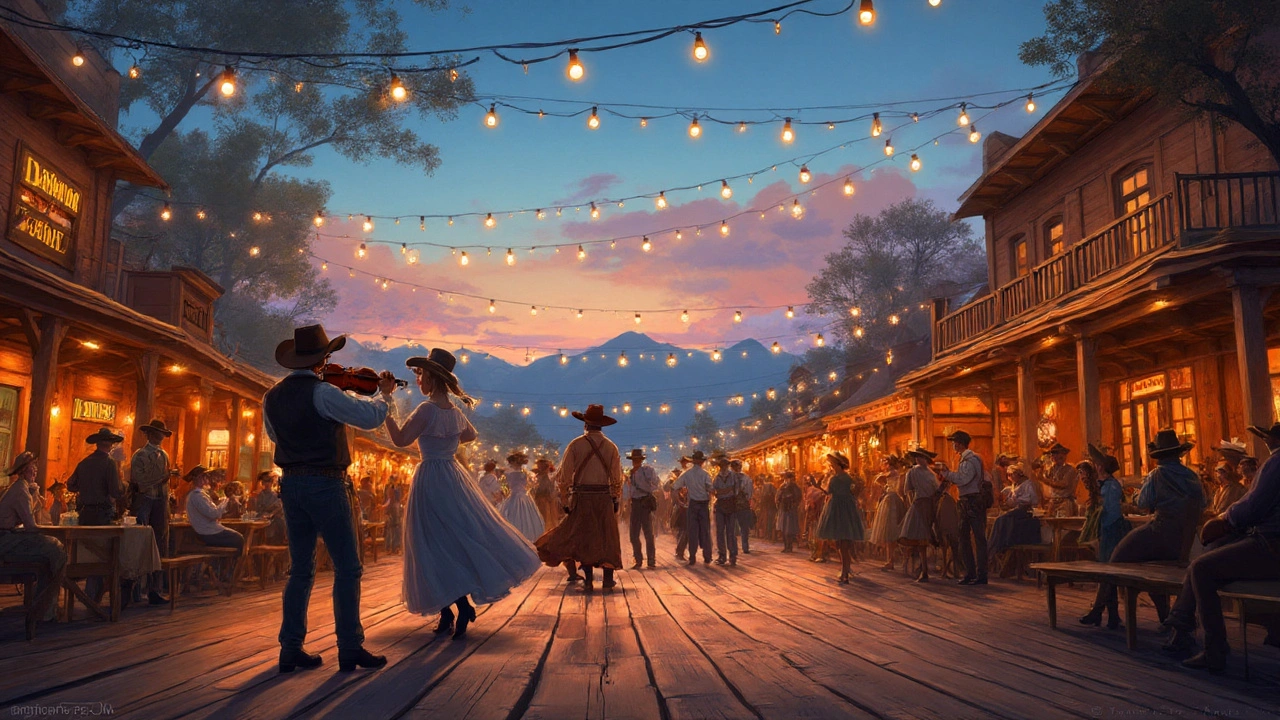
Dance Halls and Music
Dance hall is a venue where live music encouraged dancing and social interaction. Typically attached to a saloon, the hall featured a raised platform for a piano or fiddle. Couples performed popular dances such as the waltz, two‑step, and the barn dance. Music served as a universal language, bridging gaps between miners, cowboys, and Native American performers who occasionally joined in.
Traveling Shows & Circus
Traveling show is a mobile entertainment troupe that toured frontier towns. Acts ranged from sharpshooters and Wild West reenactments to circus elephants and vaudeville skits. The famous "Miller Brothers' 101 Ranch Show" visited dozens of towns between 1900‑1915, drawing crowds of up to 3,000 people in a settlement of 800. Ticket prices were modest-often a single silver dollar-but the spectacle left lasting memories.
Community Gatherings & Church Picnics
Community gathering is a social event organized by local institutions such as churches or schools. Activities included potluck meals, storytelling, and games like sack races. These events reinforced communal bonds and gave families a break from the grind of frontier life. Church picnics, held on Sundays after services, featured homemade pies, hymn singing, and occasionally a friendly foot‑race between children.
Putting It Together: The Frontier Fun Landscape
The variety of pastimes reflected the diverse needs of Western settlers. Saloon gambling satisfied the urge for risk, rodeos showcased skill, shooting contests proved bravery, while dance halls and traveling shows offered cultural enrichment. Together, they formed a vibrant tapestry that made the otherwise rugged life more enjoyable.
| Activity | Typical Venue | Main Equipment | Peak Season | Social Vibe |
|---|---|---|---|---|
| Gambling | Saloon | Playing cards, dice | Winter evenings | High‑stakes, tense |
| Horse Racing | Town square track | Thoroughbreds, saddles | Spring fairs | Festive, loud |
| Shooting Contest | Open field or range | Rifles, revolvers | Summer afternoons | Competitive, cheering |
| Dance Hall | Attached to saloon | Piano, fiddle | Evenings year‑round | Social, lively |
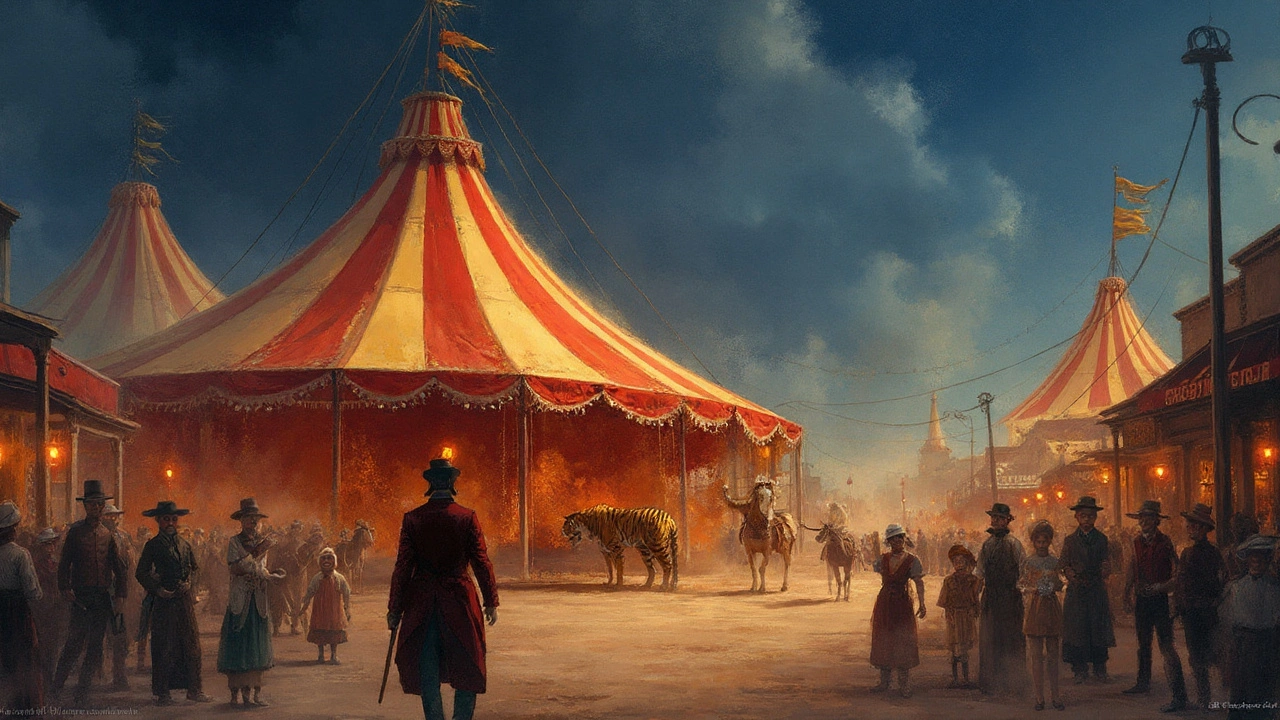
Frequently Asked Questions
What games did cowboys play in saloons?
Cowboys favored poker, especially five‑card draw, along with faro, dice games like craps, and billiards. Card decks were often homemade on the trail, and a good hand could win a few dollars or a prized bottle of whiskey.
How often were rodeos held?
Rodeos usually coincided with town fairs or cattle roundups, roughly once a year in most settlements. Larger towns might host semi‑annual events to attract neighboring ranchers.
Did women participate in Wild West entertainment?
Absolutely. Women ran dance halls, performed in traveling shows, and sometimes entered shooting contests. Notable figures like Annie Oakley gained fame through exhibition shooting, proving that frontier fun wasn’t limited to men.
What role did churches play in community recreation?
Churches organized picnics, hymn sings, and potluck dinners, providing wholesome alternatives to saloon revelry. These gatherings reinforced moral values while still offering music, dancing, and games for families.
How did traveling shows travel across the West?
Most shows used a combination of railroads for long hauls and horse‑drawn wagons for the final stretch to remote towns. They carried portable stages, tents, and a menagerie of performers, setting up temporary venues in town squares or fairgrounds.


